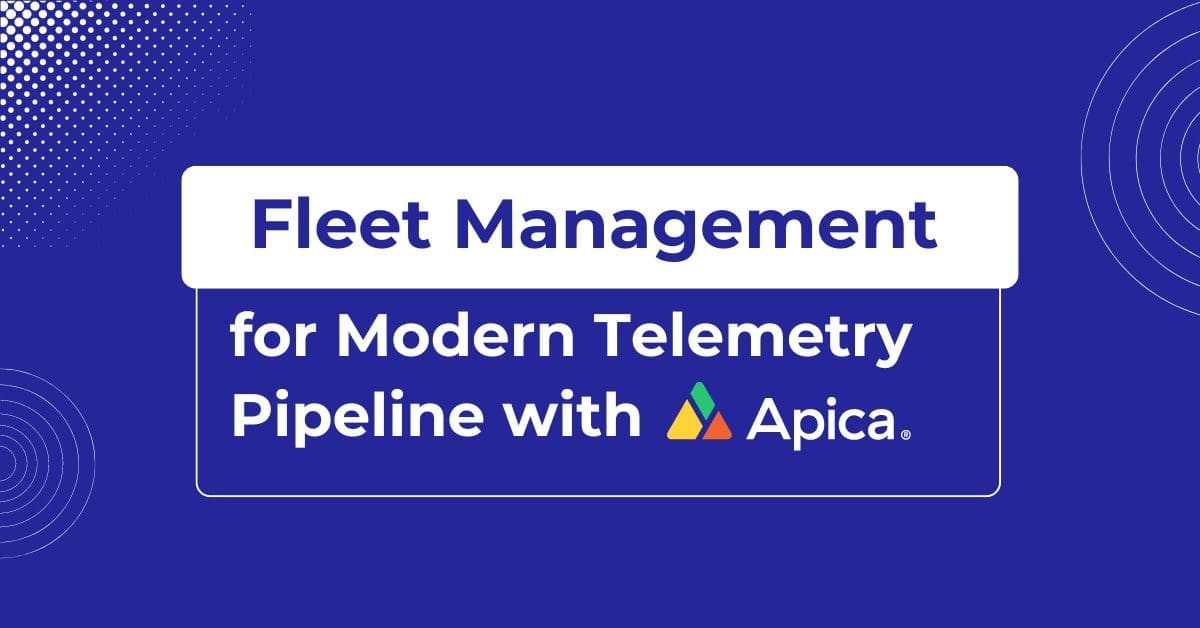SUMO LOGIC COST OPTIMIZATION
Reduce Sumo Logic costs and simplify long-term retention

Ballooning costs
Sumo Logic cost optimization is an ongoing problem faced by several enterprises as they have adopted Sumo Logic in a bid to modernize their observability stack. It is a well-formed decision for enterprises as it allows their teams to free up precious time in managing a self-hosted observability solution and use the time on core organizational activities.
One of the challenges that presents itself almost immediately after deploying Sumo Logic is the cost of the solution, especially for logging. Log volumes are not always the most predictable when it comes to planning for their costs. Unexpected user and system changes and unintended developer changes to code can cause Sumo Logic costs to balloon.
Shaking off vendor lock-in
The knee-jerk reaction of controlling costs typically leads the engineering teams down the path of looking for alternatives. The search for alternatives usually ends up with the following conclusions: they are locked into using several of Sumo Logic’s feature sets and introducing point-solutions to alleviate the logging cost problem introduces fragmentation and creates overlaps.
With apica.io’s Data fabric, vendor lock-in is no longer a concern. Just like Sumo Logic, many other platforms can be enabled on demand to comply with your business needs to consume data. Want to gather all data but send security data to Splunk while routine developer data to Sumo Logic, no problem! 1-Click data route management make this a breeze.
Drastically reduces costs and improve agility
apica.io’s data fabric provide all the knobs and meters to engineering teams to stream all relevant data streams to Datadog. A critical aspect of logging is the fact that 95% of data streams tends to be noise in a given context.
Teams can filter data in real-time to optimize the data volume being sent to Sumo Logic. Powerful extraction and reduction rules allow dynamic management of data attributes to augment or reduce unwanted data getting indexed in Sumo Logic.
The apica.io data fabric does all of this without ever loosing any of you data. Our InstaStore always keeps a master copy of 100% of your data streams in any object store of your choice and keeps it fully indexed for fast retrieval.
This provides the immediate and dual cost benefits of reducing ingest and indexing costs of Sumo Logic by 70 to 95 per cent and also provides a limitless and active retention layer for pennies eliminating the need to use Sumo Logic’s inefficient and non-agile two-tiered storage architecture.
Application and Infrastructure optimizers
Using a combination of AI/ML and rules-based capabilities, apica.io understands outliers, patterns, and anomalies and streams the noiseless/useful data to Sumo Logic while also providing other key capabilities like data enrichment for better analytics using the Sumo Logic engine. 100% of all data streams are parallelly indexed in Apica/AI’s industry-first data fabric that uses any low-cost object storage.
As an example, if you are collecting logs from a Kubernetes cluster, using a couple of simple clicks in the Apica rule pack for K8s, teams can save 70% of license spend and index size on Sumo Logic instantly!
Manage long term retention and compliance with ease
It is essential for enterprises to have a system that can ingest, store and retrieve data at scale and speed. Sumo Logic tiered storage layer means older data can only be retrieved as a slow archive. Teams need to plan for data rehydration, reindexing while face additional costs 10X cost for this indexed data.
apica.io’s unique storageless architecture built on any object storage allows the enterprise to store copious amounts of data with zero impact on performance and reliability. Data retrieval is instantaneous.
By moving your long term retention storage to apica.io vs Datadog, you can free your data and manage costs better. You also get a purpose built automation engine for retrieving data on demand into Sumo Logic. Save time and money on indexed long-term retention with apica.io.










